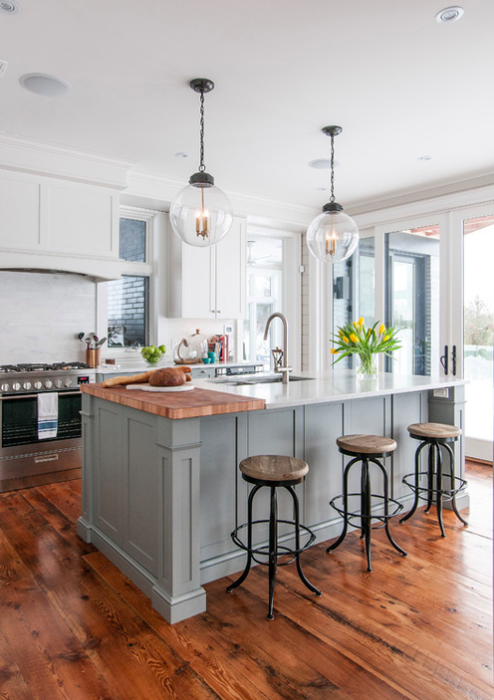Change Your Room with Cutting-edge Kitchen Island Leg Layouts
Change Your Room with Cutting-edge Kitchen Island Leg Layouts
Blog Article
The Relevance of a Sturdy Kitchen Area Island Leg in Developing a Practical Food Preparation Area
A strong kitchen area island leg serves as an essential part in establishing a functional food preparation setting, supplying necessary assistance for both the kitchen counter and numerous kitchen area activities. As cooking areas advance right into multifunctional areas for cooking, eating, and interacting socially, the choice of products and layout factors to consider for island legs ends up being increasingly vital.
Advantages of Sturdy Island Legs
Offering essential support, sturdy cooking area island legs play a critical role in boosting the performance and longevity of cooking area islands - kitchen island leg. These legs not only birth the weight of the counter top and any kind of extra products positioned on the island, but likewise add to the general stability of the framework. A well-supported kitchen area island ensures that it continues to be upright and practical, also under hefty use, which is particularly important in active cooking area settings
Additionally, tough island legs can enhance the aesthetic allure of the cooking area. They provide a strong framework that can complement numerous design styles, from modern-day to conventional. This versatility allows house owners to tailor their kitchen area islands according to individual taste while guaranteeing that the architectural integrity remains uncompromised.
Along with their helpful role, robust kitchen island legs can also improve safety. A stable island minimizes the threat of crashes brought on by tipping or wobbling, which is particularly vital in homes with children or senior people. Strong legs can assist in a smooth circulation of tasks, allowing for effective meal preparation and social communications within the kitchen room. Inevitably, purchasing tough kitchen island legs is important for a practical and visually pleasing cooking location.
Materials for Kitchen Island Legs
When choosing products for kitchen island legs, toughness and aesthetic allure are crucial elements to consider. The most typical materials consist of hardwood, metal, and engineered wood, each offering unique benefits.
Hardwood, such as maple, oak, or cherry, is a traditional selection because of its stamina and ageless appeal (kitchen island leg). It can endure substantial weight and is resistant to use, making it suitable for high-use cooking area settings. Additionally, hardwood can be tarnished or painted to match different kitchen designs
Steel legs, usually crafted from stainless steel or wrought iron, provide a commercial and modern appearance. They are extremely strong and can support significant tons while being resistant to wetness and warmth, which is beneficial in a cooking location. Steel legs can additionally be easily cleansed, improving their functionality.

Design Factors To Consider for Stability
The choice of products for kitchen island legs directly influences the style factors to consider for stability. When creating a kitchen area island, it is paramount to evaluate the weight-bearing ability of the selected products. Heavier materials, such as solid timber or steel, generally provide better security, specifically under the stress and click this anxiety of daily usage.
In addition, the leg layout need to incorporate proper geometry to improve security. A larger base enhances the support location, lessening the risk of tottering or tipping. Factor to consider ought to likewise be offered to the height of the legs; out of proportion leg lengths can bring about imbalance, endangering the total stability of the island.
Moreover, the circulation of weight across the island is crucial. Guaranteeing that the leg positioning aligns with the heaviest components, such as kitchen counters and devices, will certainly better improve security.
Maintenance Tips for Long Life

Cleansing is another vital element of maintenance. Relying on the product of the legs-- whether wood, steel, or composite-- proper cleansing methods need to be utilized. For wood legs, a gentle wipe with a suitable timber and a wet cloth cleaner will assist protect their coating. Metal legs may need a light gloss to stop rust and keep their appeal.
If the kitchen island experiences hefty use, take into consideration strengthening the legs with additional brackets or sustains to enhance longevity. By following these maintenance pointers, home owners can guarantee their kitchen area island legs remain robust and practical for years to come.
Picking the Right Leg Design
Regular upkeep makes certain that cooking area island legs stay useful and sturdy, however picking the ideal useful content leg style is equally important for both looks and assistance. The selection of leg style can dramatically affect the overall layout and harmony of your learn this here now kitchen area.

Functionality is an additional vital facet. Thicker legs or those with a strong base can support larger countertops and tools, enhancing the island's utility. On the other hand, slim legs may create an airy appearance, ideal for lighter designs however potentially less supportive.
Verdict
In summary, the value of tough kitchen island legs can not be overemphasized in the creation of a useful food preparation location. These legs offer necessary support, improve security, and contribute to the overall visual of the cooking area.
A durable cooking area island leg offers as a fundamental part in establishing a practical food preparation environment, providing needed support for both the counter top and numerous kitchen tasks.Giving important support, sturdy kitchen area island legs play a pivotal duty in boosting the capability and resilience of cooking area islands. Inevitably, investing in tough cooking area island legs is necessary for a functional and aesthetically pleasing cooking area.
Consideration should also be offered to the elevation of the legs; out of proportion leg lengths can lead to inequality, jeopardizing the general stability of the island.
Wooden legs offer heat and a timeless look, while steel legs provide a contemporary and industrial feel.
Report this page